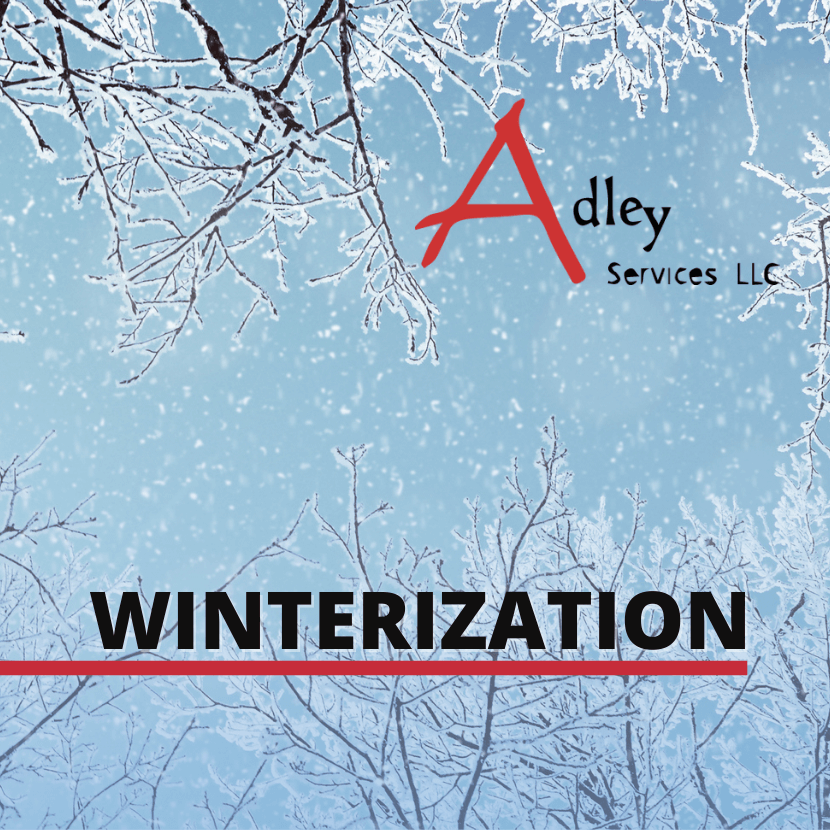
by Andrew Le Blanc, EIT / Jr. Engineer at Adley Services, LLC
It’s Freezing Cold, Literally!
Has anyone ever told you to let your kitchen faucet drip in the winter? Were you ever forced to put those little foam covers over the water spigots on the side of your house as a kid right before the big freeze as Dad sips his warm coffee inside? Maybe you haven’t had to deal with either of these, but have you ever questioned why on Earth people would? It may be a stretch to participate in these rituals in south Louisiana, where our coldest temperatures still average above freezing, but I know these are common practices farther north. Low outside temperatures can cause pipes to freeze inside your house, leaving you without running water until they can thaw. A far worse scenario would involve pipes bursting, leading to costly repairs and likely water damage. A little planning can go a long way, and simple solutions can reduce hassle and prove cost-effective.
Why You Should Care?
We can see a direct benefit to planning for cooler temperatures in our day-to-day lives, but how can that be transferred to the industry? Winterization, or the preparation of equipment that can experience low ambient temperatures, is essential to protect equipment, personnel, and process safety. Just like the piping in your house, freezing process piping can lead to:
- Operational Upsets: No flow, overpressure events, lower yields
- Safety Concerns: Pipes can burst and injure workers
- Costly Repairs: Leaking/burst piping can become expensive very quickly
- Environmental Concerns: Your process fluid may be much more hazardous than tap water
Winterization may be required when there are low ambient temperatures that can affect fluids in your process. This is a huge factor for many processes. While not an exhaustive list, a few cases of potential freezing scenarios will be discussed, along with ways to mitigate this occurrence. It is important to note that different process fluids and mixtures will have varying heat capacities and dew points, so an engineering analysis is the best way to ensure your system is adequately protected from cold weather.
How Did That Happen?
One of the simplest cases of pipe freezing can be seen with piping dead legs. If sections of pipe are routinely stagnant in a frigid environment, Alaska, for example, there is a likelihood that heat transfer could cause freezing. You can also experience partial blockages in flowing systems in the form of condensates or hydrates, which can prove to be an even more hazardous situation. Your process fluid will determine susceptibility to forming condensates based on operating temperature, ambient temperature, specific heat capacity, and a variety of other factors. This can lead to upsets, overpressure events, and other significant problems.
Fixing the Problem!
Luckily, there are a few great ways to ensure your processes are up to par on winterization! Insulation, heat tracing, and chemical injection/anti-freeze solutions can provide the necessary protection for cold weather. Just as we put insulation on the pipes in our house, industrial insulation is a passive solution with many benefits. After the initial investment, there is virtually no maintenance or energy operating cost associated with insulation. But this might not always be the most effective solution in severe cold weather conditions as you are merely slowing the rate of heat transfer to the environment without adding energy to the system.
Address the problem by using heat tracing along the pipe, either electric or using a heating medium. Heat tracing is used to maintain process temperatures in piping and can be effective in stagnant and flowing fluid scenarios. Depending on the type, it can also be installed under insulation to provide even more winterization protection. Chemical injection and anti-freeze solutions can also fix this problem but from the inside out. Instead of physical protection, they chemically prevent freezing and condensate formation by changing the properties of the fluid. While this can drastically reduce initial capital investment compared to insulation or heat tracing, operating costs for specialty injection chemicals can be higher, and the chemical compatibility with other systems can be an issue.
Regardless of the project scale, winterization should be a critical factor in designing or upgrading a process system experiencing cold ambient temperatures. Like our houses, we should protect our investment and safety when winter comes knocking at the door. If you have questions about winterization or how we can improve your existing processes, please reach out to the Adley team!
About Adley Services
With more than 20 years in the industry, Adley is your full-service engineering solution provider. We can be your trusted partner on large, multi-discipline projects. We can also be your one-stop-shop for smaller tasks that require an engineering review. Adley Services is dedicated to earning your trust on every project, regardless of the size or scope. Contact us today!
References:
http://www.piping-engineering.com/winterization-protection-against-low-ambient-temperature.html
https://www.e-education.psu.edu/png520/m21_p3.html
https://weatherspark.com/y/10821/Average-Weather-in-Lafayette-Louisiana-United-States-Year-Round

